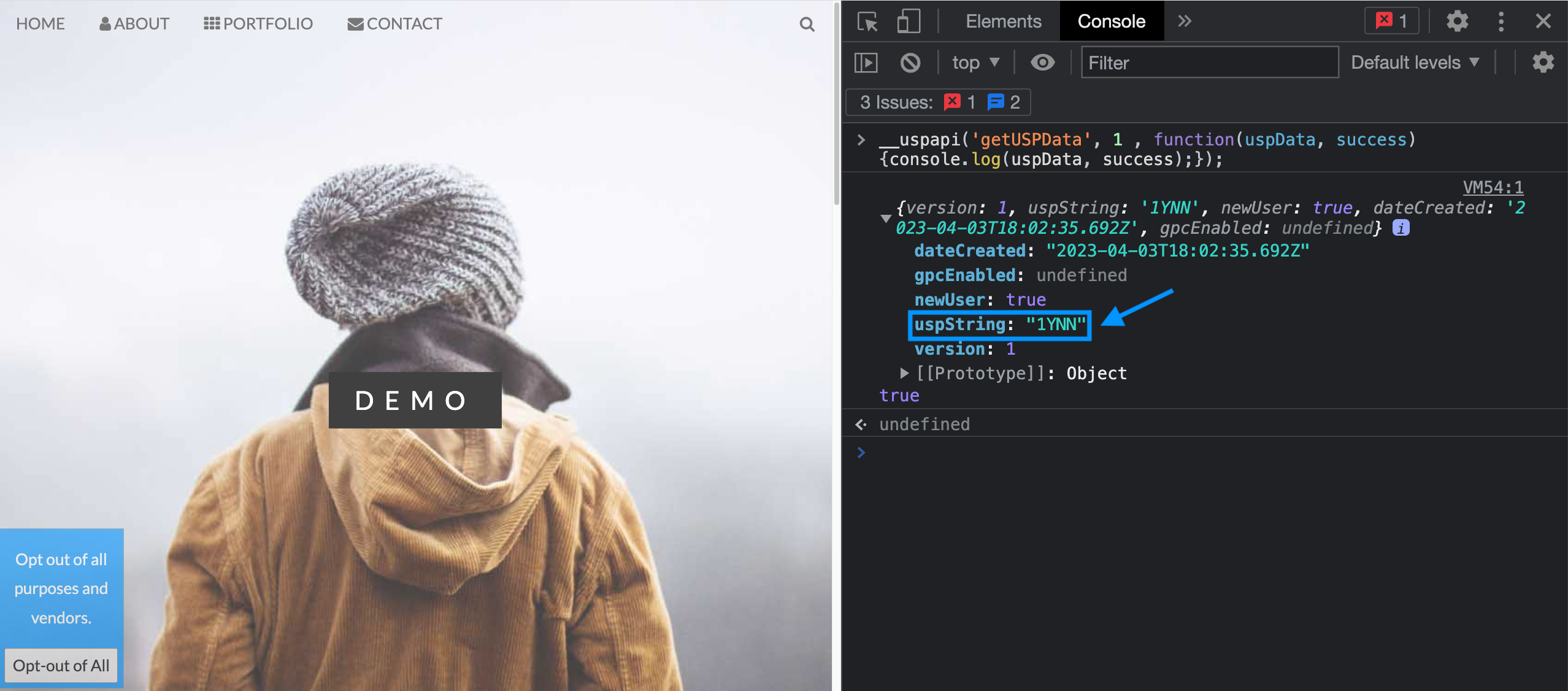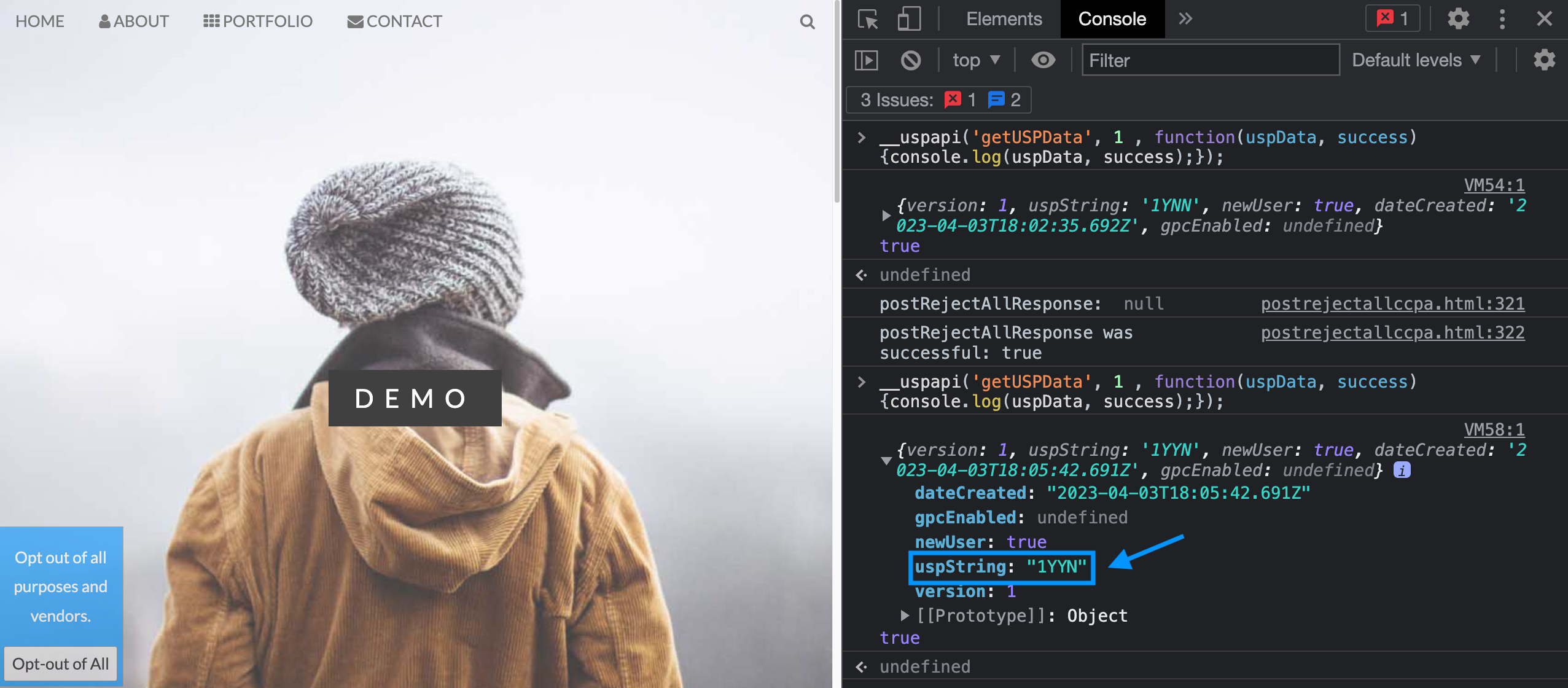The postRejectAll command is an on-page opt-out mechanism that will reject all purposes and vendors for the U.S. Privacy - CCPA vendor list associated with the property. By attaching the command to the onclick event of a page element, your organization can provide end-users with a one-click solution that allows them to easily revoke consent.
Command
__uspapi('postRejectAll', 1, function (postRejectAllResponse, success) {
//custom callback code can be included here
console.log("postRejectAllResponse: ", postRejectAllResponse);
console.log('postRejectAllResponse was successful: ' + success)
});
Implement postRejectAll
postRejectAllIn order to implement the postRejectAll command on your website property, you will need to:
- Implement a button or link on your website property with an element ID. The suggested element ID is "postRejectAll".
- Create a function that executes the
postRejectAllcommand. - Use the
document.getElementbyIdmethod to return the button or link ID and call your function for anonclickevent.
<!--Create modal with a button-->
<div id="myModal" class="modal">
<div class="modal-content">
<p>Opt out of all purposes and vendors.</p>
<button id="postRejectAll">Reject All</button>
</div>
</div>
<script>
//calls function when Opt-Out of All button is clicked
document.getElementById("postRejectAll").onclick = function() {myFunction()};
//function that executes postRejectAll command
function myFunction() {
__uspapi('postRejectAll', 1, function (postRejectAllResponse, success) {
//custom callback code can be included here
console.log("postRejectAllResponse: ", postRejectAllResponse);
console.log('postRejectAllResponse was successful: ' + success)
});
}
</script>

Response
In addition to any custom code you might implement when your function executes, a successful reject all action will return true for the success parameter.
Example
An end-user accessing our page has opted-into all purposes and vendors on our U.S. Privacy - CCPA vendor list. As such, the uspString, an encoded 4 character string that describes the end-user's consent, returns N for the third character (Has the end-user opted-out of the sale of his or her personal information?).
After clicking the button we configured to execute the
postRejectAllcommand, our script returnstruefor the success parameter.
Upon re-retrieving the uspString, the third character (Has the end-user opted-out of the sale of his or her personal information?) is now set to Y.



